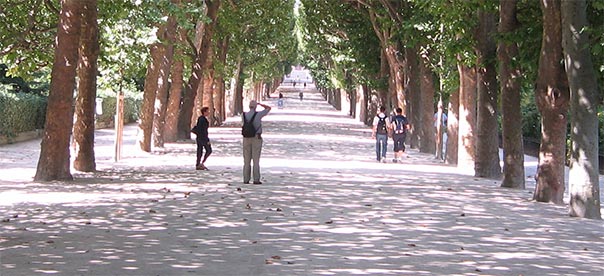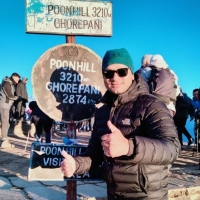Knowledge Networking Portal for Sustainable & Responsible Tourism










 Samdo: An Acclimatization Stop on Manaslu Circuit Trek
Samdo: An Acclimatization Stop on Manaslu Circuit Trek
Originally published on Haven Holidays Nepal

Introduction
Samdo is a classical and isolated village in the middle of Nepal's Manaslu region. It is of particular importance to trekkers and adventure seekers since it is one of the last villages before making the challenging Larke La Pass on the Manaslu Circuit Trek. The Samdo village is both a Himalayan natural gem and a Tibetan cultural hub, so it is a fascinating destination to stop for those seeking mountain authenticity without being on one of the busier trails in Nepal.
Actually, hidden away high in the mountains at an altitude of about 3,680 meters (12,073 feet), Samdo offers trekkers an opportunity to witness traditional Tibetan Buddhist life. The town is inhabited predominantly by individuals of Tibetan origin, and one can witness their traditions, their typical homes, and their prayer flags fluttering gently in the wind. This abundance of culture, coupled with the stunning scenery all around, makes Samdo an interesting visit for culture and nature lovers.
Likewise, Samdo is a sleepy hamlet, typically snow-covered during winter, which adds to its serene atmosphere. Due to its remote location, it is quite untouched by modern development. Life is simple here and very much near nature. Trekkers typically describe Samdo as a peaceful haven where they rest and acclimatize before making a try for the high passes that lie ahead. The village peace, pure mountain air, and panoramic views form a perfect environment for relaxation and reflection.
Moreover, the village Samdo is a compulsory acclimatization stop during Manaslu Circuit Trek for trekkers due to its high altitude. Acclimatization in Samdo reduces the risk of altitude sickness while ascending the Larke La Pass, which stands at 5,160 meters (16,929 feet) tall. Despite being small, Samdo offers basic facilities like guesthouses and restaurants that cater to trekkers.
Overall, Samdo's charm is in its culture, its breathtaking mountain scenery, and its role as a gateway to the higher Himalayas of the Manaslu area. It is one of the most memorable stops on the Manaslu Circuit Trek.
Geography and Location
Samdo is located in the remote Manaslu region of Nepal, near the northern border with Tibet (China). It stands at an altitude of approximately 3,680 meters (12,073 feet) above sea level. The town is placed in a broad valley with towering Himalayan giants surrounding it, and as a result, it is one of the most scenic stops on the Manaslu Circuit Trek.
Actually, the terrain of the Samdo area is rugged and mountainous. Samdo is located in the Himalayas, and some very big mountains are nearby. The biggest mountain is Manaslu itself, which is the world's eighth highest mountain and reaches 8,163 meters (26,781 feet) in elevation. A few of the other big peaks in the area are Himalchuli and Ngadi Chuli. These giant mountains create a dramatic, spectacular background for the village.
In fact, the valley where Samdo is located is characterized by rocky terrain and alpine meadows. There is seasonal snow in the region during winters, and the landscape drastically differs throughout the year. In spring and autumn, there are wildflowers blooming and the weather is clearer, with great views of the surrounding peaks.
Moreover, Samdo's closeness to the Tibet border also causes it to possess strong Tibetan cultural influences. The village lies on the ancient Nepal-Tibet trade route, which also renders it culturally relevant.
In geographic coordinates, Samdo lies at about 28°32' N latitude and 84°30' E longitude. It is part of the Gorkha district, Gandaki Province of Nepal.
Meanwhile, owing to its remote location and lofty altitude, Samdo is not accessible by road. The village can only be reached by trekking along steep mountain trails. The nearest roadhead is at Soti Khola or Machha Khola, from where trekkers spend a few days to reach Samdo on foot.
Overall, Samdo's unique geography and location render it a mandatory acclimatization stop on Manaslu Circuit trek and an excellent spot for absorbing panoramic Himalayan vistas.
Accessibility
Samdo is a highly remote village in the Manaslu region of Nepal. It is not accessible by motor vehicles due to its lofty altitude and rugged landscape. The only way to access Samdo is by walking through trekking, so it is a true off-the-beaten-path destination.
Actually, the normal trail to Samdo starts from Soti Khola or Machha Khola, the roadhead. These places are accessible by jeep or bus from larger towns like Besisahar or Dharapani. From there, trekkers follow a well-trodden trekking path that passes through several villages like Jagat, Deng, and Namrung en route to Samdo.
In fact, it typically takes 7 to 8 days to get to Samdo from the trailhead, Machhakhola. The route crosses numerous scenery types, from dense forests to fields with terracing and high alpine meadows. The route is occasionally demanding, with steep uphill and downhill climbing, but it is well traveled and signed, and is used regularly by both trekkers and locals.
In winter, the trail to Samdo might be snowed in, and it is more difficult and even dangerous to get there because of icy roads and landslides. In spring and autumn, the trail is in its best condition, and the highest numbers of trekkers come.
But, there is no helicopter or road service to Samdo directly. For emergency evacuations, if any, helicopters from the nearest airstrips or villages such as Deng or Samagaon are required, weather permitting. However, due to the remote location of the village, helicopter access is limited and expensive.
Likewise, porters and local guides are available in lower villages and are usually hired to help carry loads and support trekkers during the trek to Samdo. This makes it more convenient for travelers who prefer to have help with heavy backpacks.
Overall, Samdo's accessibility is only by trekking. Its inaccessibility is part of its charm, giving travelers a chance to see a peaceful Himalayan village untouched by modern roads and tourism crowds.
Major Attractions
Samdo offers trekkers a combination of overwhelming natural beauty and rich cultural heritage. Its major attractions are the breathtaking Himalayan landscape and untouched Tibetan Buddhist culture that prevails here.
First, one of the major highlights of Samdo is the panoramic mountain views. Trekkers can see the towering peak of Manaslu, the world's eighth tallest mountain at 8,163 meters (26,781 feet), from Samdo. Other nearby peaks include Ngadi Chuli and Himalchuli, which provide a stunning backdrop. These peaks have snow on them year-round and provide excellent photography.
Second, the village Samdo itself is a cultural gem. Samdo is home to Tibetan Buddhist monasteries and stupas. Prayer flags flutter in the wind, and mani stones (rocks inscribed with prayers) line the trails, lending a spiritual atmosphere. Travelers can see local monks performing rituals and sense the peace of this remote Buddhist village.
Third, traditional Tibetan-style wood frame houses with stone walls add to the charm of the village. The people follow Tibetan customs and wear colorful traditional clothes, which also adds to the unique cultural experience for visitors.
Fourth, the other major attraction near Samdo is the wide alpine meadows and high grazing land. The natural habitats are blanketed with wildflowers in spring and summer and are grazing fields for yaks and sheep. The meadows are ideal for short walks and lounging in the crisp mountain air.
Fifth, trekkers typically stop at Samdo for acclimatization on Manaslu Circuit and to explore the village itself and its surroundings. The combination of natural beauty and cultural richness renders Samdo an exceptional destination on the Manaslu Circuit Trek.
In sum, the highlights of Samdo include stunning vistas of Manaslu and nearby peaks, Tibetan Buddhist monasteries, village life, and peaceful alpine meadows. All these combine to make it an unforgettable Himalayan experience.
Local Lodges in Samdo
Samdo is a small yet well-equipped village containing local lodges and teahouses that cater mainly to trekkers of the Manaslu Circuit Trek. Despite the remote location of the village, it has several accommodation centers providing basic comfort and warmth after a day's long trek.
Actually, most of the lodges at Samdo are family-run and simple in nature. They usually offer dormitory-style communal rooms with beds and blankets, though the heating is not much. Hot water for washing and tea is found at some lodges, but hot showers are rare since there are limited water heating systems. During the winter months, lodges traditionally employ wood-burning stoves as a source of heat.
Meanwhile, the lodges along here at Samdo offer Nepali and Tibetan food predominantly. Dal bhat (lentils and rice), noodle soups, momos (dumplings), and tsampa (barley flour) are popular. The food is heavy and made from local products to provide energy to trekkers before and after crossing the high passes.
But, there is not much electricity in lodges in Samdo, which generally is provided by small generators or solar panels. Charging of electronic devices is possible in the evenings, but it is not certain. There is very limited or no internet connection in most of the lodges.
Some of the popular lodges in Samdo include the Snowland Lodge, Samdo Peak Lodge, and Yak Kharka Lodge. These provide warm hospitality, clean rooms, and great views of the surrounding mountains.
As Samdo is a key acclimatization point a long Manaslu Circuit Trek, a night or two are usually spent here by most trekkers. The lodges provide a warm area to relax, meet up with other trekkers, and prepare for the next challenging part of the trek.
In general, Samdo's local lodges offer simple yet comfortable lodging with tasty food, basic facilities, and warm hospitality. They are at the heart of developing trekking tourism in this remote Himalayan village.
Lodges in Samdo
- Chez Karsang Lodge
- Yak Hotel
- Tibetan Twin Hotel
- Zambala (also Zambala Hotel)
Best Things to Do
Samdo is an ideal destination for trekkers to unwind and acclimatize with some out-of-the-ordinary activities that blend nature, culture, and adventure. As a remote Himalayan destination, activities here are mostly focused on immersing oneself in the local lifestyle and gearing up for the next section of the trek.
Meanwhile, acclimatization is the main task here at Samdo during Manaslu Circuit Trek. Samdo is at around 3,680 meters, and thus trekkers spend time here to allow their bodies to get used to the high altitude before crossing the Larke La Pass that is over 5,000 meters in altitude. The rest day is extremely crucial to prevent altitude sickness and allows guests to explore the village at a relaxed pace.
Moreover, tourists can explore the village Samdo itself, which boasts a strong Tibetan Buddhist culture. By walking along the narrow mani stone- and prayer flag-filled streets, visitors can stop by the local monastery and observe monks' prayers and rituals. The cultural experience offers excellent insight into traditional Himalayan life.
Likewise, nature walks around Samdo's alpine meadows are another popular choice. The wide, grassy meadows are perfect for relaxing short treks with breathtaking views of snow giants such as Manaslu, Himalchuli, and Ngadi Chuli. Spring and summer see the wildflowers blooming, and the landscape is kaleidoscopic. Shutterbugs will find ample scenic spots here.
Additionally, the cultural experience with the locals is also rewarding in Samdo. The villagers are welcoming and often more than happy to share stories about their lifestyle and culture. One can learn about yak herding, subsistence farming, and Tibetan culture.
Equally, for bird watchers, the area around Samdo hosts a range of Himalayan birds and therefore offers a peaceful spot for nature lovers.
Briefly, the most important activities to enjoy in Samdo include resting and acclimatizing, exploring Buddhist culture, trekking via alpine meadows, engaging with people, and enjoying the stunning mountain scenery. All these activities make Samdo a great and memorable stopover on the Manaslu Circuit Trek.
What is Samdo Popular for?
Samdo is popular among tourists and trekkers for several compelling reasons. Its mix of cultural wealth, scenic beauty, and tactical location on the Manaslu Circuit Trek makes it a place of interest that lures visitors from all over the world.
For starters, Samdo's cultural authenticity distinguishes it. The village preserves traditional Tibetan Buddhist lifestyles, which are of immense interest and tranquility for most trekkers. Visitors like being able to witness ancient religious practices, see monks praying, and walk among mani stones and prayer flags. Its Tibetan architecture and warm hospitality are the icing on the appeal. Such cultural richness offers an experiential experience beyond natural beauty.
Second, Samdo is famous for its spectacular mountain views. It lies in the shadow of Manaslu, the eighth highest mountain in the world, and other giant Himalayan giants. The views of snow-covered mountains, alpine meadows, and gigantic valleys are a photographer's paradise. Many trekkers stop here simply to gaze at and photograph these incredible vistas.
Third, the village Samdo serves a vital role as a high-altitude acclimatization area. Many trekkers stay in Samdo to acclimatize to the physically demanding Larke La Pass ahead. This reduces the risk of altitude sickness, making the trek safer and more enjoyable. Having teahouses and basic facilities ensures that trekkers can rest comfortably in the middle of nowhere.
Lastly, the inaccessibility of Samdo by roads and flight adds to its appeal. Since it is accessible only by trekking, it provides a genuine off-the-beaten-path adventure. For trekkers who want to escape crowded tourist trails, Samdo provides seclusion, fresh mountain air, and communion with nature.
Overall, Samdo is popular because it combines rich Tibetan culture, stunning Himalayan scenery, essential acclimatization stop, and remote tranquility. These qualities make it a must-visit village in the Manaslu Circuit Trek.
| Concerned URL | https://www.havenholidaysnepal.com/blogs/samdo-an-acclimatization-stop-on-manaslu-circuit-trek |
|---|---|
| Address | |
| Source | https://www.havenholidaysnepal.com/blogs/samdo-an-acclimatization-stop-on-manaslu-circuit-trek |
| Keywords | Samdo village, Manaslu Circuit Trek, Acclimatization stop, Trekking in Nepal, High altitude trekking, Larkya La Pass, Samdo to Dharmasala, Himalayan villages, Nepal trekking 2025, Remote villages Nepal |
| Target group(s) | Destinations , Businesses , Travellers , Education, Research, Consultancy , NGOs, Partnerships, Networks |
| Topics | Natural Heritage & Biodiversity , Travel, Transport & Mobility |















































